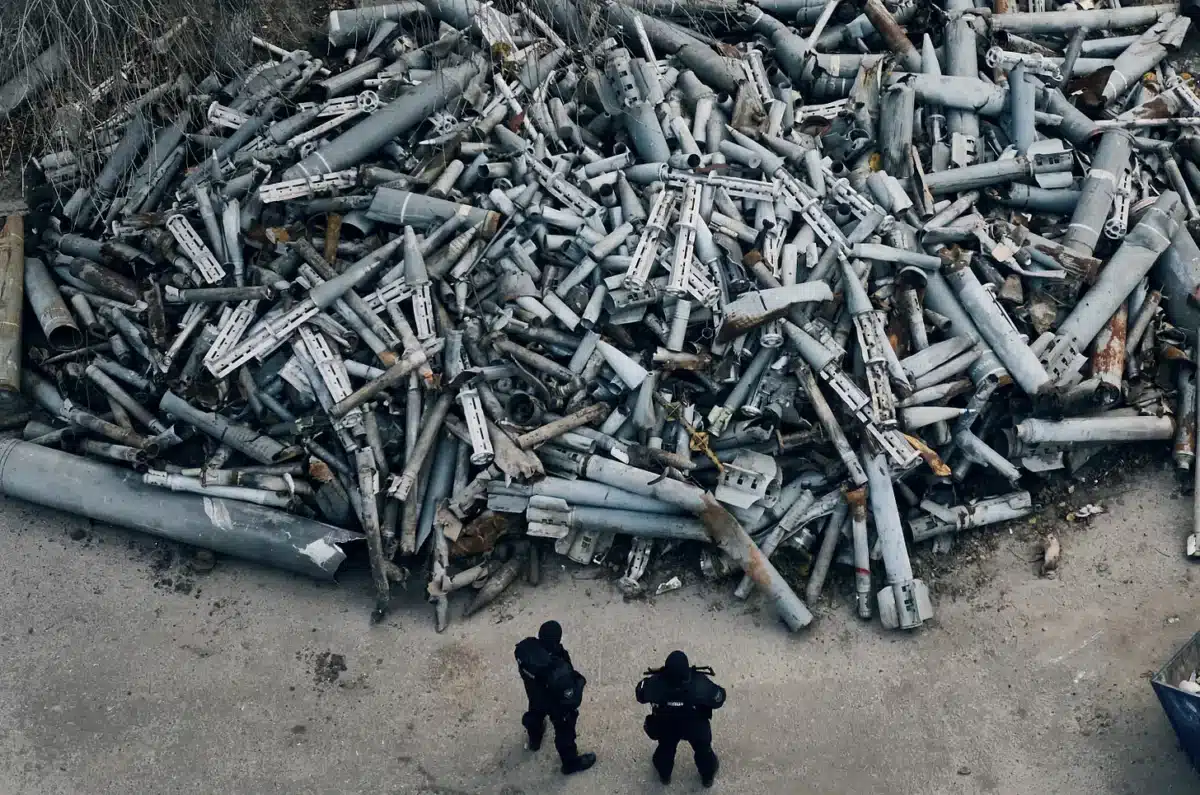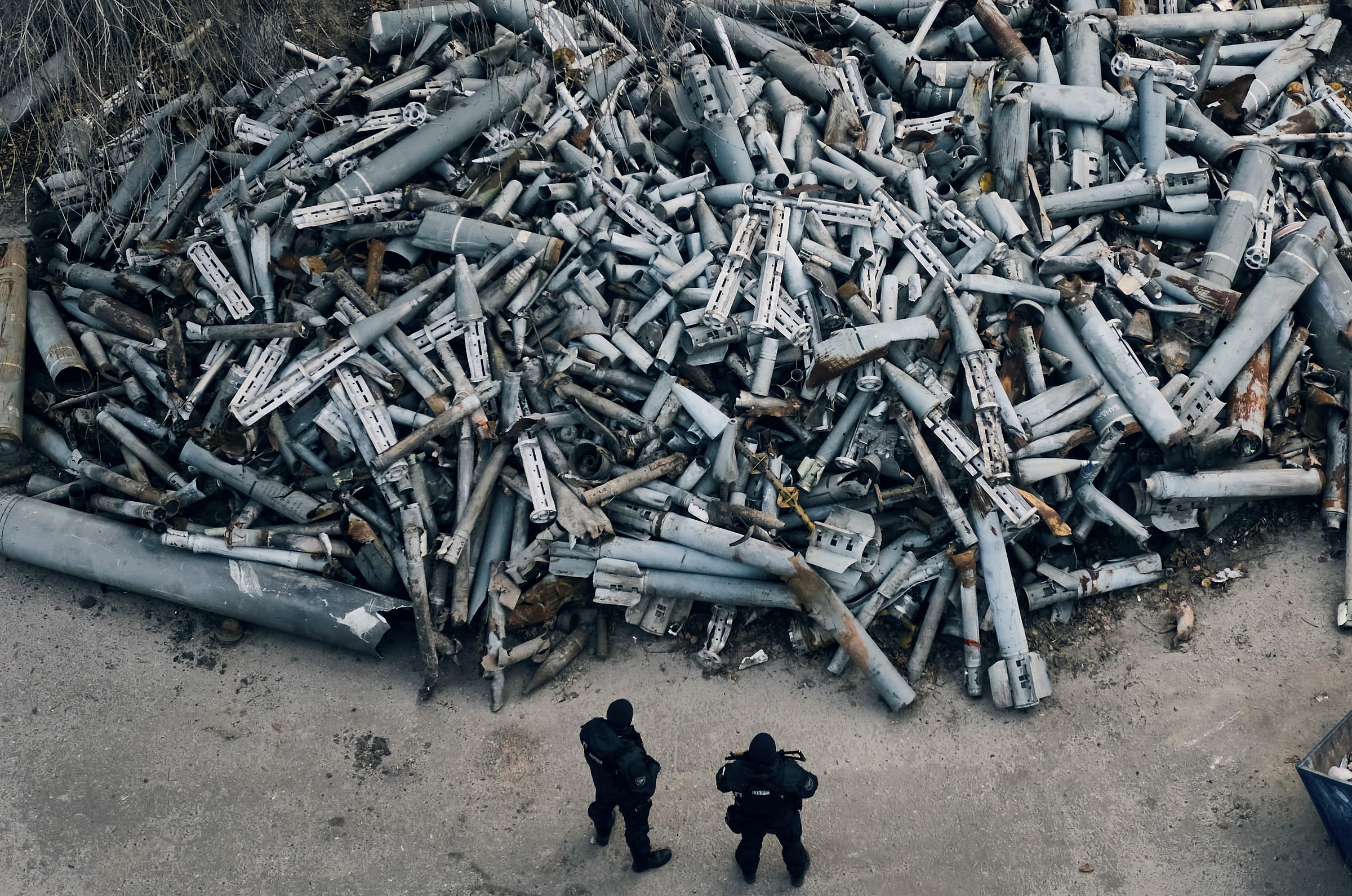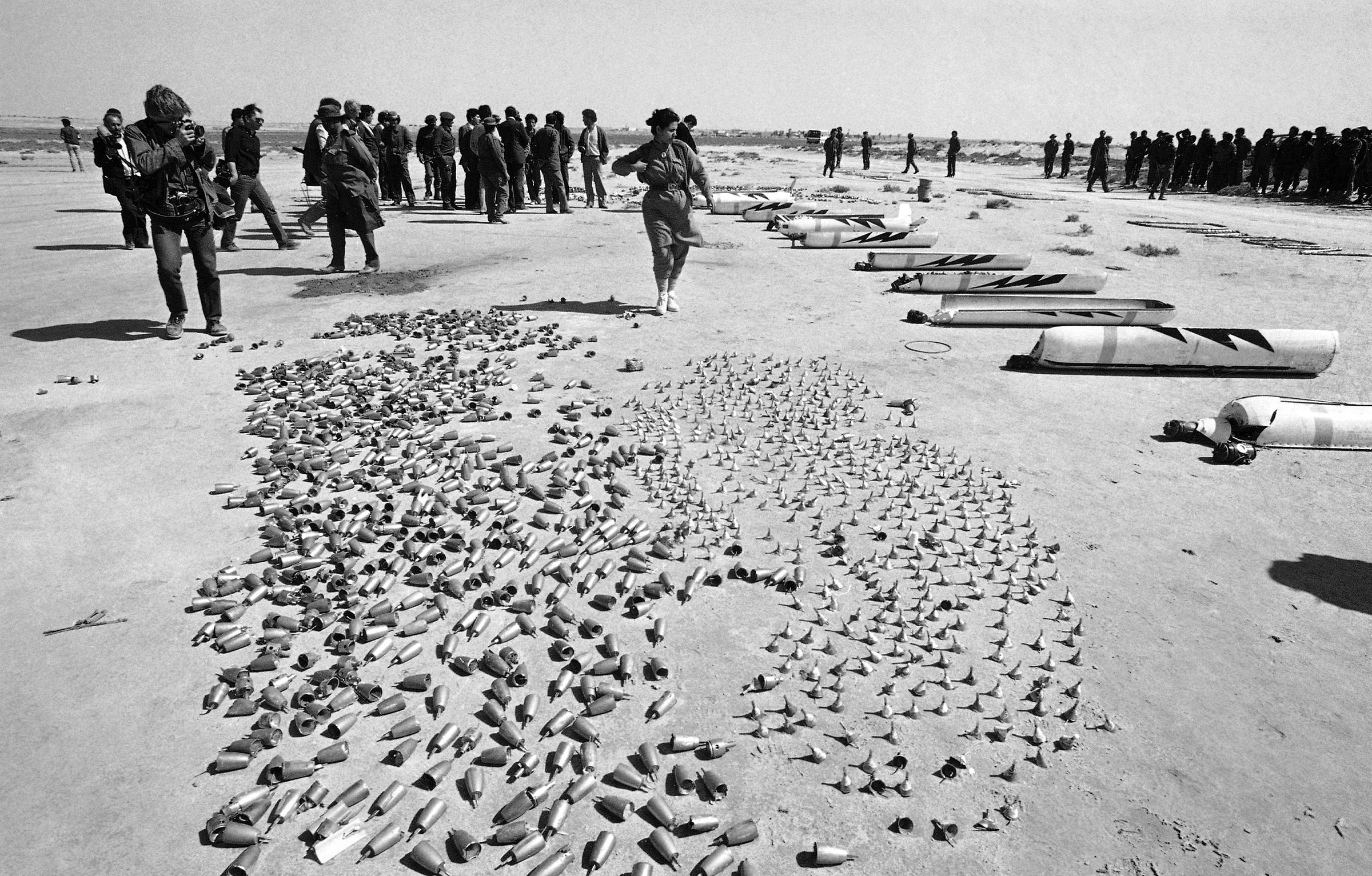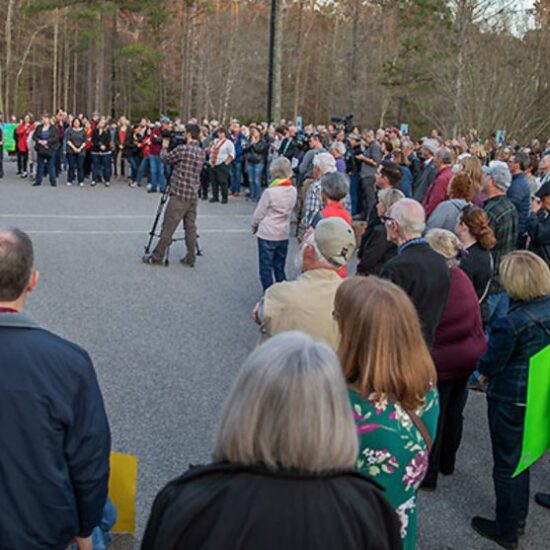
In 2021, 9-year-old Soupha was playing with two friends when they picked up a ball to add to their fun. Only it wasn’t a ball. Instead, the Laotian boys had found a small round bomb dropped there five decades earlier. It exploded, killing both of Soupha’s friends and leaving him seriously injured with lasting scars across his body.
During the Vietnam War, neighboring Laos became the most heavily-bombed country per capita ever in the world — even more than Britain, Germany, or Japan in World War II. Although the U.S. never declared war on the nation in southeastern Asia, we still dropped more than 2 million tons of bombs on a county smaller than Oregon. That included about 270 million small cluster munitions, a weapon that scatters smaller bomblets over a wide area. The bomblets often look like balls or other toys, even sometimes painted in bright colors. And an estimated 30% — or about 80 million of them — failed to explode. So they wait for someone to pick them up so they can complete their mission.
The last bomb fell on Laos 50 years ago last month. But the killing continues. The Cluster Munition Coalition, which is working to eradicate cluster munitions, released a new report earlier this month that documented ongoing devastation around the world in 2022. The group found 1,172 casualties in eight countries last year from cluster munitions, with 95% of the victims civilians and 71% of them children.
Most of the casualties last year were from active uses in Myanmar, Syria, and Ukraine. But 185 came from cluster munition remnants dropped in previous conflicts. Nine were in Laos (a drop from 30 in 2021), bringing the nation’s documented total to more than 7,800 (and thousands more from other types of U.S. bombs left behind from the war). And even though the U.S. has spent hundreds of millions of dollars in recent years trying to help remove cluster munition remnants from Laos, it’s estimated that less than 10% of the unexploded bombs have actually been cleared since the war ended in 1973.
But even as the U.S. spends money to clean up from our cluster munitions dropped in the 1960s and 1970s, the Biden administration is adding to the death toll from these bombs today. In July, President Joe Biden authorized giving cluster bombs to Ukraine to use against Russia, which had already been using the weapons in its invasion of Ukraine. Biden sent the controversial weapons despite his spokesperson saying last year that if Russia was using cluster munitions “it would potentially be a war crime.”
So while 890 casualties of cluster munitions attacks in Ukraine were documented in the recent report, that number in Ukraine and Russia will likely grow in 2023. And while the Biden administration claims the fail rate is much lower now, Biden still had to ignore a 2009 law banning the export of cluster munitions with a failure rate greater than 1%. This means the administration is acknowledging there will be unexploded bombs lying around when the conflict ends. Perhaps even killing children five decades from now.

Police officers on Dec. 3, 2022, look at collected fragments of the Russian rockets, including cluster rounds, that hit Kharkiv, Ukraine. (Libkos/Associated Press)
The move by Biden was a hot topic during last week’s annual U.N. meeting in Geneva, Switzerland, to assess progress toward the Convention on Cluster Munitions, an international treaty that went into effect in 2010 to ban the production, stockpiling, transfer, and use of cluster bombs. But while 112 nations have ratified it, Russia, Ukraine, and the U.S. have all refused. During last week’s meeting, Bulgaria, Slovakia, and South Africa each announced the completion of their years-long efforts to destroy their stockpile. Other countries also reported significant progress in destroying the weapons, including Peru and Bosnia and Herzegovina. But the fighting between Russia and Ukraine overshadowed the good news.
“The Holy See appeals to all parties to the conflict in Ukraine to put an immediate end to the use of cluster munitions and wishes to echo Pope Francis’s endless appeals to mobilize for peace in the war-torn Ukraine,” a representative of the Vatican’s government said during the U.N. meeting. “The seeds of peace lie in sincere dialogue and the application of international law, including international humanitarian law. As many States Parties to this Convention know far too well, the deadly legacy of cluster munitions represents a stinging defeat for the innocent people who suffer from the cruelty of conflict, as well as for the achievement of integral human development, and the preservation of stability and peace.”
And yet, the U.S. continues to not only ignore the Convention on Cluster Munitions but also to ship the deadly weapons to Ukraine. So this issue of A Public Witness uncovers the history of cluster bombs and the moral failure of nations that continue to utilize them.
Get cutting-edge reporting and analysis in your inbox every week by subscribing today!
How We Learned to Start Worrying and Hate the Bomb
A cluster munition, or cluster bomb as they are sometimes called, gets its name from the fact that it contains multiple explosive submunitions that spread out blow up. These weapons can be dropped from an aircraft or launched from the ground or sea, with each bomb filling the air with explosions and shrapnel up to the size of several football fields.
Cluster munitions were first significantly deployed during World War II by German forces using planes to drop “Butterfly Bombs” on a British port. The subsequent attempt to collect or remove the unexploded bomblets demonstrated that they behave much like land mines and resulted in nearly as many people being killed after the raid as were killed during it.
The next major use of cluster munitions came when the United States deployed millions of them during the Vietnam War. After this, they became a staple of modern warfare, featuring prominently in the Falklands War, the First Gulf War, the Kosovo War, Israel’s occupation of the Palestinian territories, and many others.
The U.S. and its allies dropped more than 60,000 cluster bombs (with about 20 million submunitions) during the 1991 war in Iraq. NATO forces used cluster munitions in Bosnia and Herzegovina in the early 1990s — and the country just this month announced it finished completely removing the remaining bombs after three decades. During the U.S. invasion of Afghanistan two decades ago, the U.S. dropped more than 1,200 cluster bombs (with nearly 250,000 bomblets), and the U.S. again hit Iraq after the 2003 invasion of that nation. The U.S. last used them in December 2009 in Yemen and until the recent shipment to Ukraine hadn’t exported any since 2015. But the U.S. stockpile includes about 1 billion submunitions.

Journalists and Libyan soldiers walk around fragments of cluster bombs that were collected by the Libyans near Benghazi on April 21, 1986, after a U.S. air raid. (Herve Merliac/Associated Press)
The military utility of this type of weapon is that it quickly delivers significant quantities of explosives to a vast area with less of a logistical burden and cost than conventional “unitary” warheads. Convoys of heavily armored vehicles, roads, airfields, and military installations can be completely destroyed by a small number of personnel engaging in only a few strikes.
Most of the world, however, has decided that they cause unacceptable harm. There are a number of reasons why this has become the ethical consensus when compared to other forms of explosive weaponry that are capable of inflicting death and destruction.
The broad reach of cluster munitions means that there is an increased risk of collateral civilian victims during an attack. The failure rate is high enough that there are often hundreds or thousands of lethal “blinds” or “duds” left behind from even a single attack. This combination of expanded range and the likelihood of unexploded submunitions significantly increases the chances of an accidental encounter when compared to other types of ordinance.
And unlike most minefields, these affected areas are not fenced off or marked. Since they are small and light, they also contain a sensitive fusing system that can be set off with even minimal disturbance. This size also means they are easily picked up by children.
Even when the presence of unexploded submunitions is made widely known and the risk of death and injury is therefore minimized, this can result in the displacement of vulnerable populations from their homes, hinder war relief and rebuilding efforts, and disrupt necessary livelihood activities such as farming crops or grazing animals — all of which can prove devastating to local communities.
The Soul of the Nation?
The Biden administration offers a weak justification for handing over weapons they previously said could be a war crime if used by Russia. Biden defended his decision by claiming it was necessary to keep Russia from winning since “the Ukrainians are running out of ammunition.” By that logic, however, is there any weapons line that he wouldn’t cross?
The argument wasn’t that these weapons are morally okay but that there wasn’t another option to stop Russia. If we run out of cluster munitions, that same argument could be used to justify giving Ukraine chemical weapons or other deadly devices banned under international treaties. (Fortunately, the U.S. actually signed the international treaty banning use of chemical weapons and finally finished destroying our stockpile in July — ironically the very same day Biden announced his cluster munitions decision.)
The question that should weigh on Biden and other national leaders is not if the weapons will work to win a war but if they should be used at all. And with that ethical frame, cluster weapons once again fail.
“Cluster bombs may be effective at killing now, perhaps even expedient. But we know from experience now that wars aren’t won only on the battlefield, or even when politicians decide to end them,” John Sianghio, a religious ethicist and teaching fellow at the University of Chicago Divinity School, told us.
“The memory of the moral path we take, like the memory of the lives we take and the way we take them, lives on in the hearts and minds of people,” added Sianghio, who is also a former U.S. Army operative. “Politics, and war is politics as Carl von Clausewitz says, has a long temporal arc. As Dr. Martin Luther King hoped, I hope that ours bends towards justice.”
We too hope the arc can bend toward justice, but clearly it’s at best a jagged arc. Presidents and lawmakers in both parties over the past 15 years have failed to make the U.S. a party to the Convention on Cluster Munitions. This puts us in the company of nations like China, Egypt, Iran, Israel, and North Korea. There have been pushes to take action, but they’ve not found success. Last year, 11 Democratic members of Congress wrote a letter to Biden urging him to adopt a policy to block production and exportation of cluster bombs. And this year there have been efforts by a few Democratic and Republican representatives to block the U.S. from exporting cluster munitions, but they’ve failed to gain enough support.

A cluster ammunition rocket lies on a sunflower field at sunset, in the Kharkiv region of Ukraine on Sept. 23, 2022. (Evgeniy Maloletka/Associated Press)
So the U.S. keeps a massive stockpile of cluster munitions and is throwing them into an active warzone. All of this stands in stark contrast to what Biden promised to do as president.
As he stood in Wilmington, Delaware, to officially accept the Democratic Party’s nomination for president on Aug. 20, 2020, Biden delivered an optimistic, moralistic vision that “love is more powerful than hate, hope is more powerful than fear, light is more powerful than dark.”
“May history be able to say that the end of this chapter of American darkness began here tonight as love and hope and light joined in the battle for the soul of the nation,” he added.
Biden often invoked that kind of language, with “battle for the soul of the nation” serving as one of his campaign’s key slogans in speeches, on podium signs, and on banners. He’s returned to that language since then as well. For instance, his Sept. 1, 2022, speech in front of Independence Hall in Philadelphia, as he took aim at Donald Trump and the Capitol insurrection as the midterm elections heated up was titled “Battle for the Soul of the Nation.”
So it’s fair to use his own words to judge his decision to ship cluster munitions to Ukraine even though such bombs are unethical and violate international standards. If this is the state of the nation’s soul, then it’s not well. And when this is done in our names by our government with our money, then it should not be well with our souls.
As a public witness,
Brian Kaylor & Jeremy Fuzy






